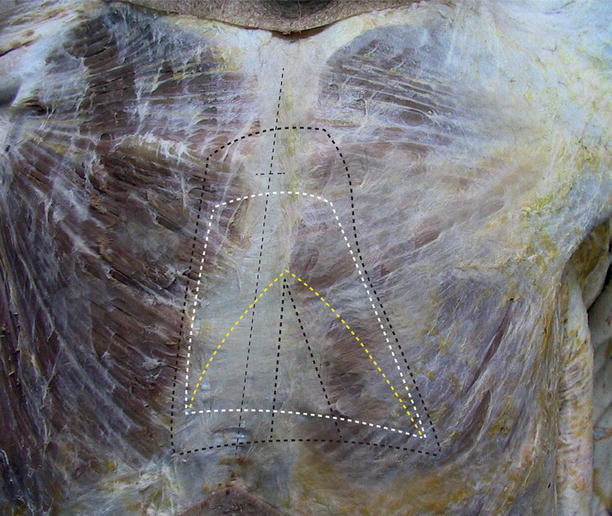(1)
Anatomy Department, University of Medicine and Pharmacy Carol Davila, Bucharest, Romania
Abstract
The projection of the pericardium has a rectangular shape with convex borders, obtained by uniting four points:
10.1 The Projection of the Pericardium
The projection of the pericardium has a rectangular shape with convex borders, obtained by uniting four points:
The right superior point is on the superior margin of the second right rib, two centimeters from the sternum.
The right inferior point is on the superior margin of the seventh rib, two centimeters from the sternum.
The left superior point is marked by the first left chondrosternal joint.
The left inferior point is found in the fifth left intercostal space on the midclavicular line.
Some comments are required: the pericardium ascends on the superior vena cava up to the opening of the arch of the azygos vein.
The pericardium ascends on the pulmonary artery following an oblique line that passes under the bifurcation of the pulmonary trunk. This oblique line then reaches the aorta up close to the origin of the brachiocephalic artery.
10.2 The Projection of the Pleural Recesses
The projection of the costomediastinal pleural recesses partially covers the anterior pericardium and projects on the anterior thoracic wall forming two triangles (Fig. 5.7):


Fig. 10.1




The largest area represents the pericardial projection. The dotted white line delineates the relative dullness of the heart. The yellow dotted line delineates the absolute dullness cardiac area. The inner triangle represents the “pericardial costal triangle” useful during pericardial puncture
Stay updated, free articles. Join our Telegram channel

Full access? Get Clinical Tree


